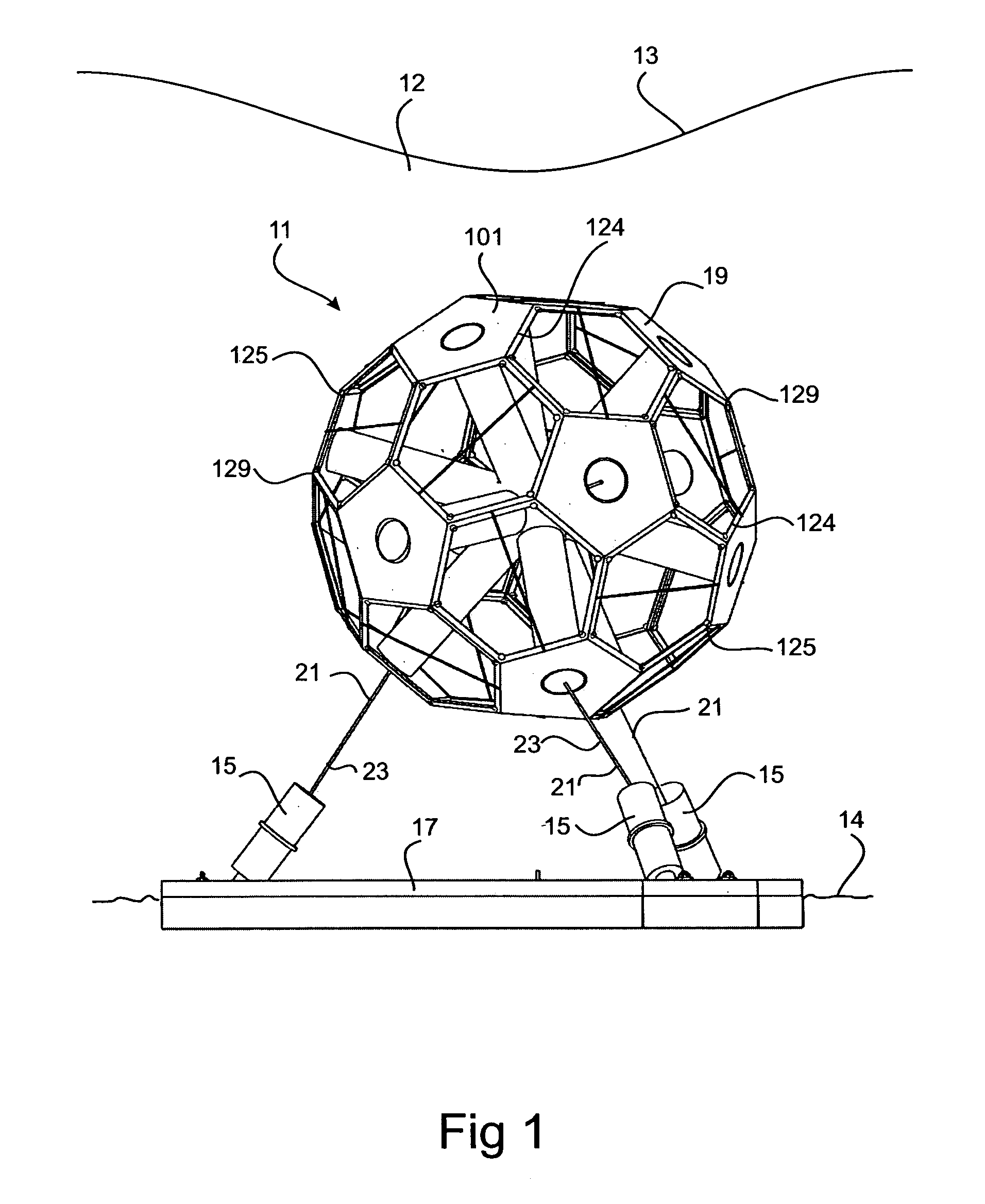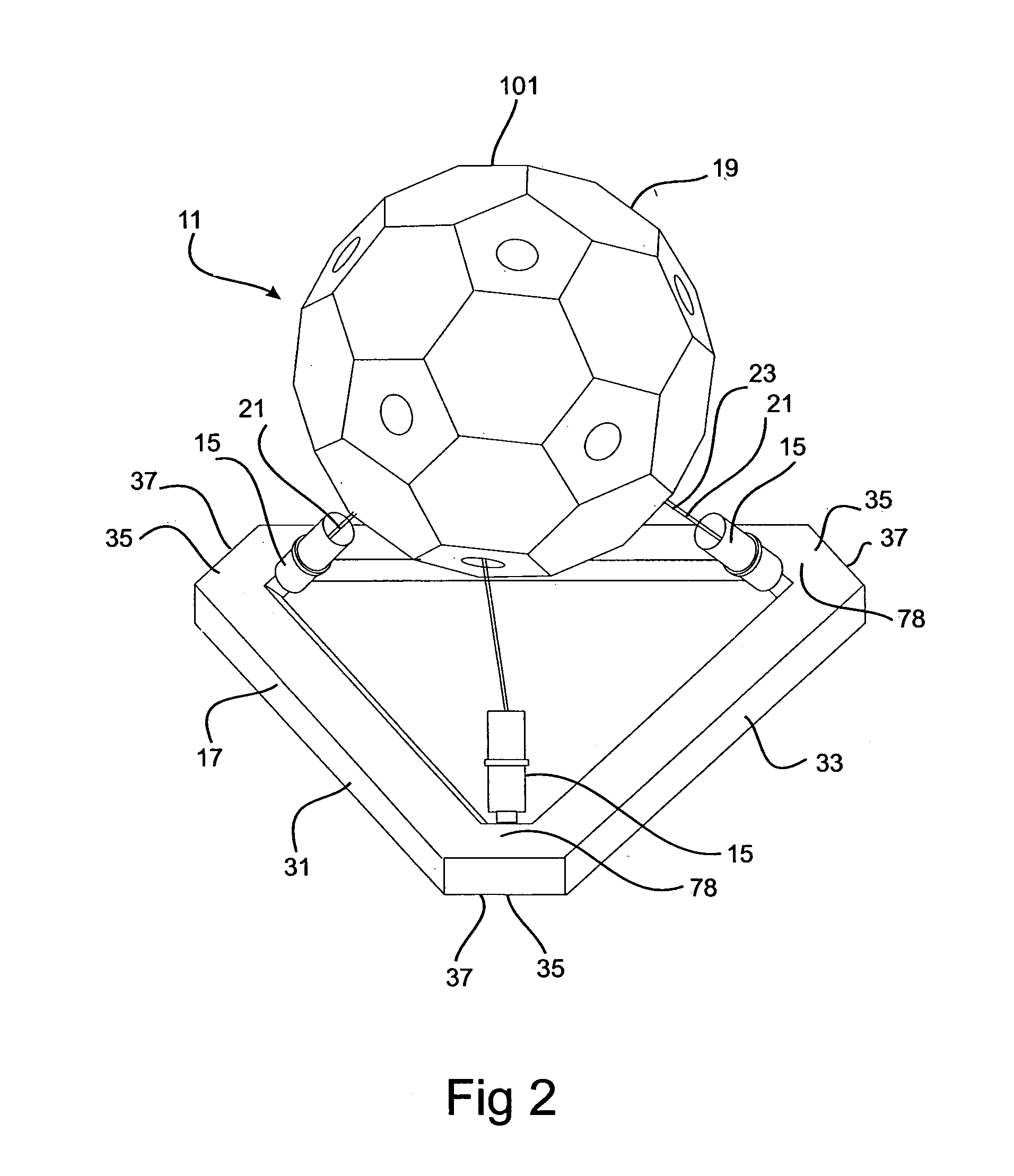Bouyant actuator
a technology of actuators and floats, applied in mechanical devices, machines/engines, sea energy generation, etc., can solve the problems of tethers to which the floats are connected, prone to damage or collapse, and floats can be subject to extreme forces, etc., to achieve the effect of adding effective mass
- Summary
- Abstract
- Description
- Claims
- Application Information
AI Technical Summary
Benefits of technology
Problems solved by technology
Method used
Image
Examples
Embodiment Construction
[0070]Referring to the drawings, there is shown a buoyancy actuator 19 used in apparatus 11 for harnessing wave energy in a body of water and for converting the harnessed energy to high pressure fluid, typically above 0.7 MPa and preferably above 5.5 MPa. The high pressure fluid can be used for any appropriate purpose. In the arrangement shown, the high pressure fluid comprises water used for power generation and / or desalination.
[0071]The apparatus 11 is installed for operation in a body of seawater 12 having a water surface 13 and a seabed 14.
[0072]The apparatus 11 comprises a plurality of pumps 15 anchored within the body of water 12 and adapted to be activated by wave energy. The pumps 15 are attached to a base 17 anchored to the seabed 14. Each pump 15 is operably connected to a buoyant actuator 19 according to the embodiment buoyantly suspended within the body of seawater 12 above the pumps but below the water surface 13 at a depth such that it is typically a few metres below t...
PUM
 Login to View More
Login to View More Abstract
Description
Claims
Application Information
 Login to View More
Login to View More - R&D
- Intellectual Property
- Life Sciences
- Materials
- Tech Scout
- Unparalleled Data Quality
- Higher Quality Content
- 60% Fewer Hallucinations
Browse by: Latest US Patents, China's latest patents, Technical Efficacy Thesaurus, Application Domain, Technology Topic, Popular Technical Reports.
© 2025 PatSnap. All rights reserved.Legal|Privacy policy|Modern Slavery Act Transparency Statement|Sitemap|About US| Contact US: help@patsnap.com



